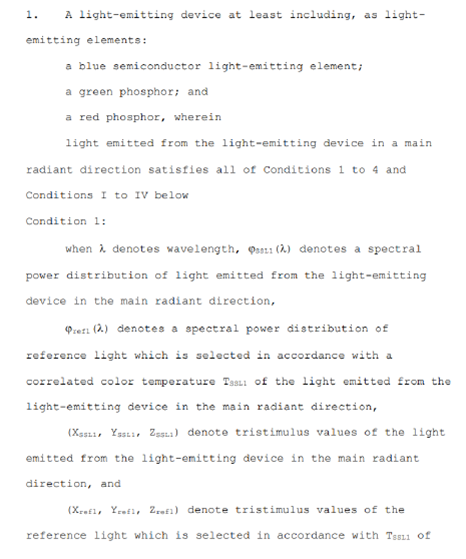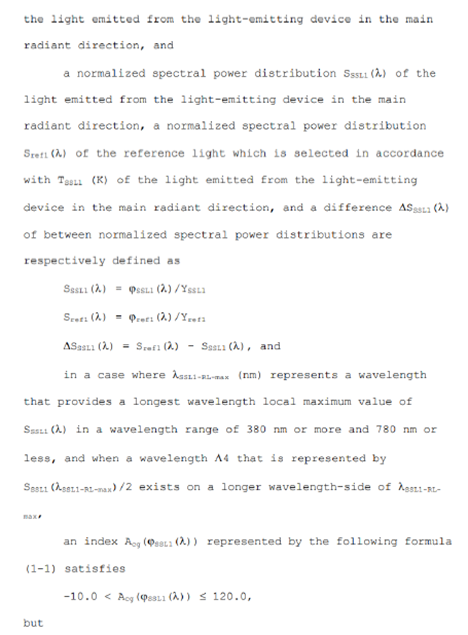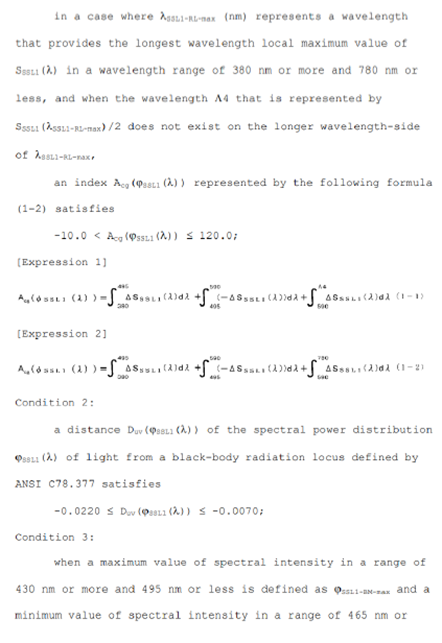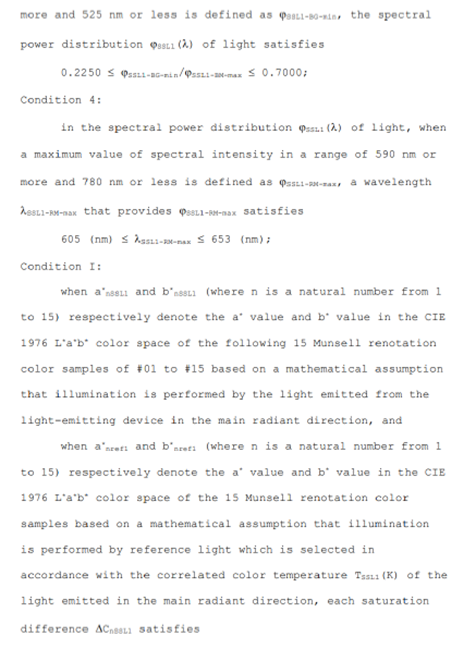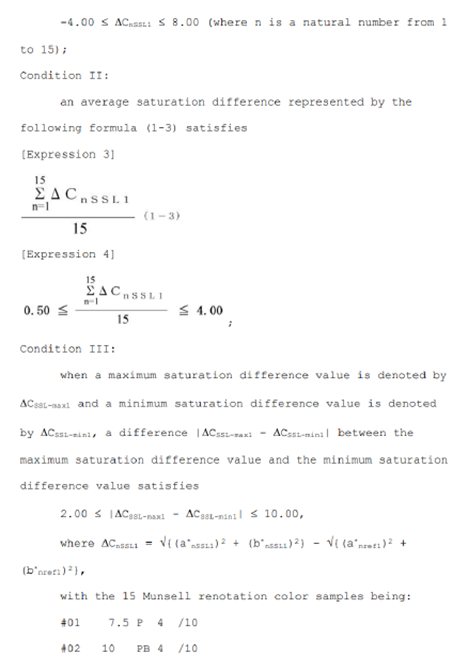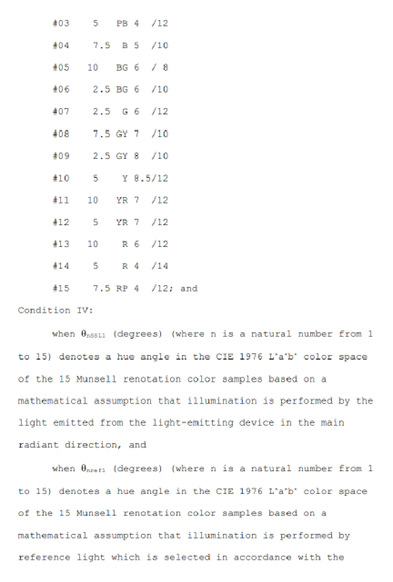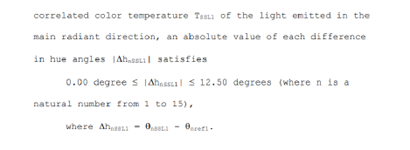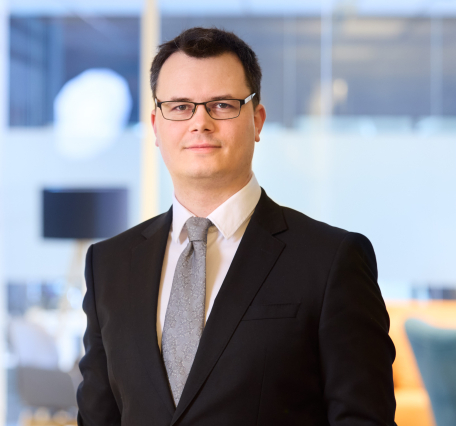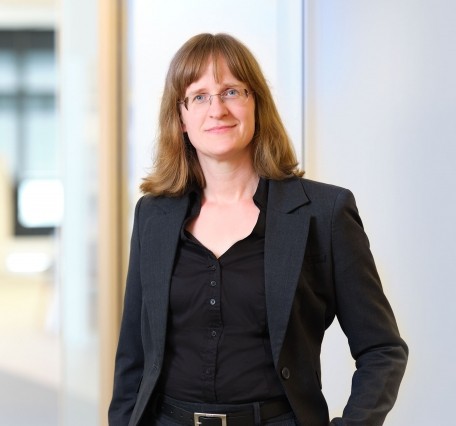

Het definiëren van de uitvinding aan de hand van vele parameters en complexe voorwaarden kan een onnodige belasting vormen voor een ervaren persoon.
The light-emitting device of the application includes, as light-emitting elements, a blue semiconductor light-emitting element, a green phosphor, and a red phosphor. Claim 1, shown below this summary, formulates a number of conditions that must be satisfied by the light emitted from the light-emitting device. The conditions are casted in terms of parameters that should stay within certain limits.
The ED’s view
The ED was of the opinion that the parameters used in the claims were unusual parameters that are only derived from extensive calculation to be carried out in equations 1-4 of the claim. The ED opined that in order to explore the limits of the claim, a research program had to be carried out based on trial and error and involving extensive measurements and calculations. According to the ED, the burden of proof to show sufficiency lied with the Applicant because the application did not provide a single example or technical information showing that it is plausible that the claimed invention can be carried out.
The Applicant’s view
The Applicant argued that the parameters used in the claims were standard parameters in the field of LEDs, were explained in the application, and were also used in other patent applications that are explicitly cited in the present application. Moreover, expressions used in the claim were common mathematical operations and the calculations to be carried out not extensive.
Moreover, according to the Applicant, the description of the present application provided examples with different combinations of components and materials to produce a light-emitting device according to the claim.
The Applicant filed with their grounds of appeal a table T1 summarizing results disclosed in the application. Table T1 distinguished between light-emitting devices of “Experimental examples” as well as “Comparative experimental examples”, and showed that any “Experimental example” satisfied all the conditions in the claim, whereas any “Comparative experimental example” did not.
The Board’s view
The Board accepted that a number of parameters occurring in the claim can be experimentally measured, determined or are otherwise known to the skilled person. While the Board agreed with the ED that a certain parameter in the claim was not generally used in the field of lighting devices, the Board still found that the wording of the claim allowed the skilled person to understand how to calculate this parameter. The Board further stated that the same reasoning applied to the calculations to be performed according to other conditions in the claim.
However, the Board was not convinced that the skilled person could design a light-emitting device such that the conditions in the claim are satisfied, based on the information in the application and common general knowledge.
The Board acknowledged that the skilled person might be aware of crucial parameters that might have to be modified or selected to possibly fulfill the claimed conditions. Examples of such crucial parameters are chemical compositions, mixture proportions, thickness, disposition, peak wavelengths and full-widths at half-maximum of the phosphors, shape and structure of the semiconductor light-emitting element, additional optical elements such as filters, lenses, etc.
However, in view of the large number of parameters to consider and the large number of conditions to be met and their complexity, the skilled person using their common general knowledge would not be in a position to provide, without undue burden, a light-emitting device fulfilling the claimed conditions and to solve the problem underlying the application. The Board agreed with the ED that a research program would have to be carried out.
The Board discussed the examples mentioned in the application. According to the Board, all light-emitting devices mentioned in table T1 had the same light-emitting elements, but only the “Experimental examples” fulfilled all the conditions in the claim whereas the “Comparative experimental examples” did not. The Board found that the application as filed was silent about the technical features necessary to obtain such different results and did not describe any details on how the experimental examples fulfilling the conditions in the claim are implemented.
For disclosing the invention in an enabling manner, the Board opined that the application should have included more details “about the mixture proportions of the phosphors, the thicknesses and dispositions of the phosphor layers, the shape, structure, arrangement and driving conditions of the semiconductor light-emitting element, the use and arrangement of additional optical elements such as filters, lenses, etc.”, but that the application did not provide any such guidance for manufacturing a device fulfilling the claimed conditions.
The Board concluded that the application failed to disclose at least one way enabling the skilled person to carry out the invention (referring to Case Law of the Boards of Appeal of the EPO, 10th edition 2022, II.C.5.2) and that even if one way had been disclosed, this would still have been insufficient in view of the multiple complex conditions and the many parameters to be considered. After selecting light-emitting elements, the skilled person would then have to start extensive calculations, simulations and measurements, i.e. carry out a research program (II.C.6.7) in order to explore the limits of the claim to find out whether or not the claimed conditions are met.
Decision of the Board
The Board decided that the requirements of Art. 83 EPC are not met and dismissed the appeal.
Claim 1 of the main request
